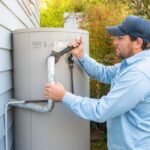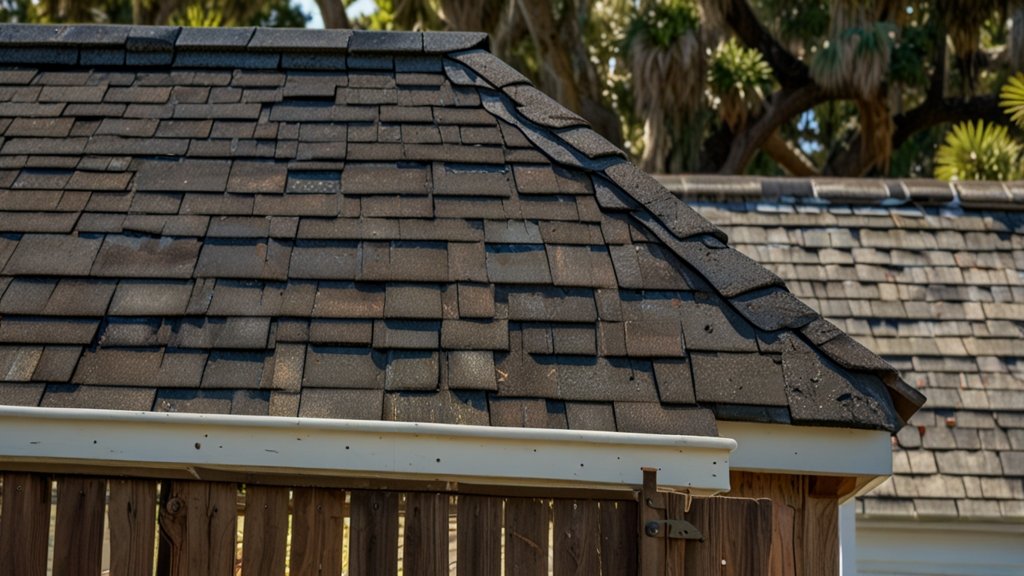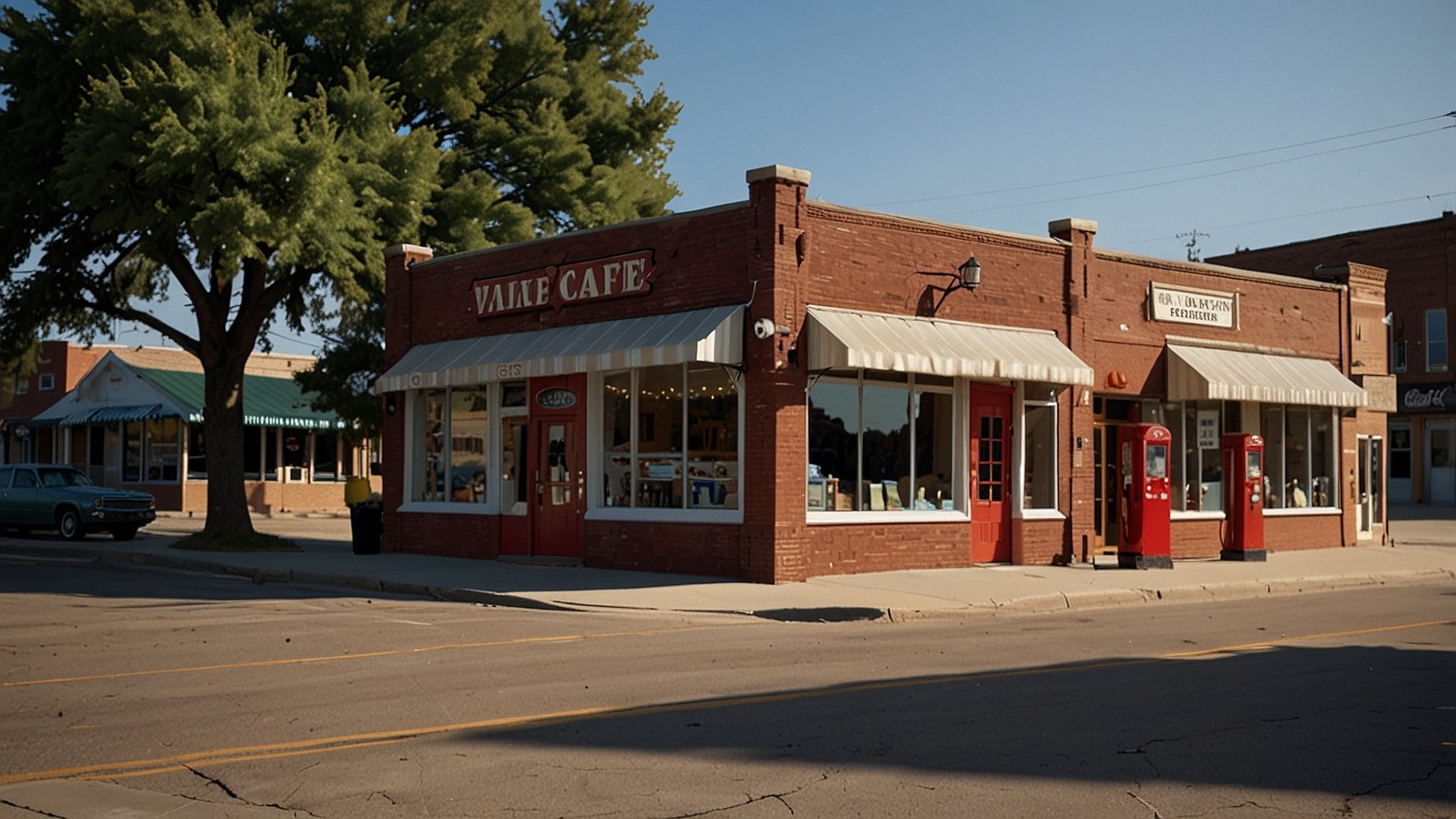You hear it before you see it. That low, insistent roar building offshore. Maybe it’s just a summer squall rolling in fast over the marsh, or perhaps it’s the harbinger of something bigger. Here in Charleston, we know the weather isn’t just small talk; it’s a force shaping our homes, our landscapes, and our peace of mind. In 2023 alone, NOAA reported over $1 billion in property damage across South Carolina from severe weather events. That salty Lowcountry air we love? It’s a relentless, corrosive companion. The humidity? It’s a breeding ground for rot and mold. Your roof and your fence aren’t just aesthetic choices; they’re your home’s first line of defense against a uniquely demanding coastal environment. That’s where specialized crews, like the Tides Team, become more than contractors – they become your partners in resilience.
Table of Contents (Because Even Humans Like Roadmaps)
- Charleston’s Cruelty: Why Roofs & Fences Fail Faster Here
- Roofing in the Lowcountry: More Than Just Shingles Overhead
- Fencing the Fortress: Security, Style & Salt Resistance
- Material Showdown: What Actually Works on the Coast?
- Beyond Installation: The Lifeline of Maintenance
- Why Expertise Isn’t Optional: The Tides Team Difference
- Your Charleston Roof & Fence FAQs (Answered Honestly)
- The Final Word: Building for the Next Tide, Not Just Today
1. Charleston’s Cruelty: Why Roofs & Fences Fail Faster Here
Let’s be real: Charleston is stunning, but it plays rough. That gorgeous, humid breeze? It’s loaded with salt aerosols that accelerate corrosion on metal components faster than you can say “rusty nail.” The intense summer sun beats down relentlessly, baking and degrading materials prematurely. And those sudden, torrential downpours? They don’t just test your gutters; they probe relentlessly for the tiniest weakness in your roof’s armor or your fence’s sealant. High winds whip debris around like projectiles. Termites? Oh, they thrive here. Honestly, if you’re installing a roof or fence designed for, say, Arizona or Minnesota, you’re practically inviting trouble. It’s not if generic materials will fail here, but how quickly. Some experts focus solely on wind ratings, but downplay the salt and humidity – that’s a costly oversight in my book.
2. Roofing in the Lowcountry: More Than Just Shingles Overhead
Your roof isn’t just keeping rain out; it’s a complex system battling UV radiation, thermal shock, and wind uplift pressures that would make a kite jealous. Choosing the right materials and installation techniques is non-negotiable.
- Metal Roofing: A star performer here. Stands up to salt, sheds rain like a duck’s back, reflects heat, and laughs at high winds. The upfront cost stings a bit, but longevity? Often 50 years+. Worth every penny for peace of mind during hurricane season. Look for high-grade aluminum or Galvalume steel with robust warranties.
- Architectural Asphalt Shingles: The popular choice, but not all are created equal. You need impact-resistant (Class 4) shingles designed for coastal zones. They handle hail and wind-blown debris much better. Forget the basic 3-tab stuff; it’s toast in a serious storm. Proper ventilation underneath is also critical to prevent heat and moisture buildup that cooks your shingles and attic.
- Tile (Concrete or Clay): Beautiful and durable, offering excellent fire resistance and longevity. But… heavy. You must ensure your home’s structure can handle the load, especially after decades of settling in our soft soil. Also, individual tiles can become missiles in extreme winds if not meticulously installed and maintained.
Roofing Material Showdown: Charleston Champions & Challengers
| Feature | Metal Roofing | Architectural Asphalt (Class 4) | Concrete/Clay Tile |
|---|---|---|---|
| Wind Resistance | Excellent (140+ MPH) | Very Good (130+ MPH) | Good (Varies – Proper install critical) |
| Salt Resistance | Excellent (Aluminum best) | Good (Coastal-specific formulas) | Excellent |
| UV Resistance | Excellent | Good (Prone to granule loss over time) | Excellent |
| Lifespan | 40-70+ years | 25-30 years (Coastal) | 50+ years |
| Upfront Cost | $$$$ | $$-$$$ | $$$$-$$$$$ |
| Weight | Light to Moderate | Light | Very Heavy |
| Best For | Ultimate durability, wind/salt zones, longevity | Cost-effective performance, wide style choice | Aesthetics, longevity, fire resistance |
| Charleston Watch-Out | Ensure proper alloy/coating for salt | MUST be Class 4 coastal-rated | Structural assessment CRITICAL, wind uplift risk |
3. Fencing the Fortress: Security, Style & Salt Resistance
Your fence defines your property line, offers privacy, keeps kids and pets safe, and contributes massively to curb appeal. But in Charleston, it’s also constantly waging war.
- Vinyl Fencing: Low maintenance? Absolutely. Salt resistant? Generally, yes. But let’s break that down. Cheap vinyl becomes brittle under intense UV exposure – cracking and fading faster than you’d hope. Higher-quality, UV-stabilized vinyl performs much better. Wind resistance is decent if posts are sunk deep, but a solid privacy fence acts like a sail in high winds. Lighter, semi-privacy styles often fare better.
- Aluminum Fencing: My personal dark horse contender for coastal zones. It doesn’t rot, rust (thanks to powder coating), or attract termites. It’s lightweight yet strong, handles wind well with open designs, and salt air is usually a non-issue. Styles range from classic ornamental to modern. Honestly, this isn’t talked about enough for its resilience here.
- Wood Fencing (The Classic Challenge): Nothing beats the warmth and natural look of cedar or pressure-treated pine. But. Salt moisture accelerates rot. Humidity invites mold and mildew. Termites see it as an all-you-can-eat buffet. It demands constant vigilance: staining or sealing every 1-2 years, checking for damage, replacing compromised pickets. If you love wood, be prepared for the upkeep, or consider composites.
- Composite Fencing: Mimics wood beautifully without the constant maintenance. Resists rot, insects, and fading better than real wood. It’s heavier and more expensive than vinyl, but offers a more premium look. Ensure it’s rated for coastal humidity and UV.
4. Beyond Installation: The Lifeline of Maintenance
You wouldn’t buy a boat and never check the hull, right? Same principle. Post-installation care separates homes that weather decades from those needing premature, costly replacements.
- Roofs: Biannual inspections (spring & fall) are gold. Look for missing or damaged shingles/tiles, compromised flashing (especially around chimneys and vents!), clogged gutters (a HUGE source of water intrusion), and signs of moss or algae growth. Get those gutters cleaned religiously!
- Fences: Check for loose posts or pickets, signs of rot at the base (especially wood), rust on hardware or metal fences, warping (vinyl/composite), and ensure gates latch properly. Wash down salt spray buildup periodically.
- The Tides Team Insight: “We see too many homeowners wait for a leak or a leaning post before calling. Proactive checks are far cheaper than reactive repairs, especially after storm season. Documenting maintenance can also help with insurance claims.”
5. Why Expertise Isn’t Optional: The Tides Team Difference
Okay, let’s get down to brass tacks. Anyone can swing a hammer, but building resilience in Charleston requires deep local knowledge. This isn’t just about slapping up materials; it’s about understanding how our specific cocktail of salt, sun, wind, and rain interacts with those materials over time.
What sets apart a team like Tides Team? It’s in the details:
- Material Mastery: They don’t just sell you *a* roof or *a* fence; they guide you towards the right roof or fence for your specific location (oceanfront vs. inland, shaded vs. full sun) and budget, prioritizing coastal durability.
- Installation Precision: Using techniques proven for high-wind zones (proper nailing patterns, hurricane straps where needed), ensuring drainage slopes are correct, sealing penetrations meticulously against driven rain. Deep footing for fence posts is non-negotiable in our sandy soil.
- Code Whisperers: Keeping up with Charleston County building codes and wind zone requirements isn’t optional; it’s mandatory for safety and insurance compliance. A seasoned local team navigates this seamlessly.
- The “Charleston Factor” Mentality: They anticipate the unique challenges – like selecting fasteners specifically resistant to salt corrosion, recommending extra sealants in high-splash zones, or understanding how local vegetation might impact drainage or fence integrity. It’s that ingrained local experience you simply can’t Google.
6. FAQs
- Q: How often should I REALLY inspect my roof in Charleston?
A: At least twice a year – spring (post-storm season check) and fall (pre-winter prep). After any major storm with high winds or hail, get a professional inspection ASAP. Hidden damage is common. - Q: Is vinyl fencing truly maintenance-free near the coast?
A: “Maintenance-lite” is more accurate. High-quality, UV-stabilized vinyl resists salt and won’t rot, but it can still get dirty, develop mildew in shaded areas, and needs occasional washing. Cheaper vinyl becomes brittle and fades quickly. Avoid solid panels in very high-wind areas. - Q: What’s the #1 mistake homeowners make with coastal fencing?
A: Skimping on post depth and concrete footing. Charleston’s sandy soil and high water table mean posts can shift or heave easily. Posts need to be sunk deep (often 3+ feet) in concrete for longevity, especially for privacy fences catching wind. - Q: Can I just patch my roof after storm damage?
A: Sometimes, yes, for minor isolated damage. But often, patching an older roof creates an uneven wear pattern and weak spots. If your roof is nearing the end of its lifespan or damage is widespread, a full replacement is usually the wiser, more cost-effective long-term investment. Get a professional assessment. - Q: Do I need a permit for a fence in Charleston?
A: Almost always, yes. Height, location (setbacks from property lines/streets), and sometimes material are regulated. Your fence contractor (like Tides Team) should handle permitting – never assume it’s not required! Waterfront properties often have additional restrictions (DHEC/OCRM). - Q: Are metal roofs noisy during rain?
A: Modern metal roofs installed with solid decking and proper insulation are no noisier than an asphalt roof during rain. The “tin roof” stereotype comes from older installations over open rafters. It’s largely a myth with current methods. - Q: How long does a good Charleston roof actually last?
A: It varies wildly by material and maintenance. A quality metal roof: 40-70+ years. Class 4 Architectural Shingles: 25-30 years. Tile: 50+ years. But neglect, severe storms, or poor installation can drastically shorten any roof’s life. Invest in quality and upkeep.
7. The Final Word: Building for the Next Tide, Not Just Today
Looking out over the marsh at high tide, it’s a powerful reminder: the water keeps coming back. The storms keep forming. The salt keeps blowing. Protecting your Charleston home isn’t about a quick fix or the cheapest bid; it’s about building a legacy of resilience. It’s about choosing materials engineered for the fight and partnering with craftsmen who understand the specific battleground – folks who live and breathe this coastal challenge, like the crew at Tides Team.
Investing in a roof and fence built for Charleston isn’t just an expense; it’s an investment in security, longevity, and that priceless Lowcountry peace of mind. When the next nor’easter whips in off the Atlantic, or the summer sun beats down relentlessly, wouldn’t you rather know your home’s armor is truly tidewater tough?
Is your current roof and fence truly built to withstand the next Charleston storm season, or are you gambling with the biggest investment you’ll likely ever make? Maybe it’s time for a real conversation with someone who gets it.
YOU MAY ALSO LIKE: Designers’ Pick: Bluestone Pavers for Luxe Outdoor Living











